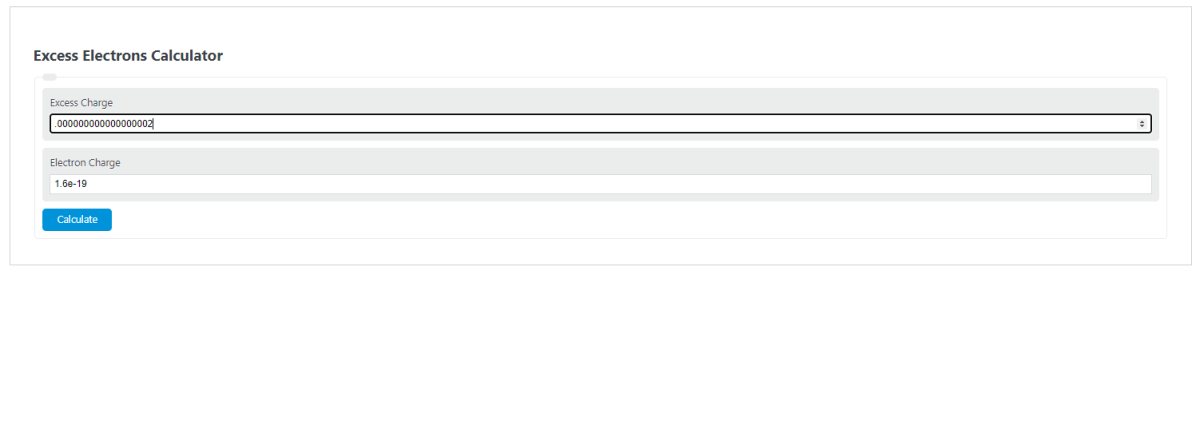Enter the total excess charge and the charge of the electron into the calculator to determine the number of excess electrons.
- Debye Length Calculator
- Net Charge Calculator
- Bond Order Calculator
- Bond Length Calculator
- Charge to Mass Ratio Calculator
- Energy Level Calculator
- Amps To Electrons Per Second Calculator
Excess Electrons Formula
The following formula is used to calculate the number of Excess Electrons.
EE = EC / ELC
- Where EE is the number of Excess Electrons
- EC is the excess charge
- ELC is the electron charge (1.60*10^-19 C)
To calculate the Excess Electrons, divide the excess charge by the charge of one electron.
What are Excess Electrons?
Definition:
Excess Electrons are a measure of the number of electrons in excess of a normal amount carried within a charge.
How to Calculate Excess Electrons?
Example Problem:
The following example outlines the steps and information required to calculate Excess Electrons.
First, determine the total excess charge. In this example, the total excess charge is 2*10^-18.
Next, determine the charge of one electron. This is known to be 1.60*10^-19 Coulombs.
Finally, calculate the number of Excess Electrons using the formula above:
EE = EC / ELC
EE = 2*10^-18 / 1.60*10^-19
EE = 12.5
